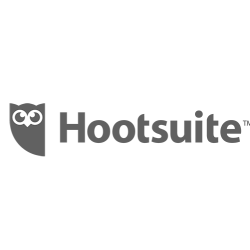
Put a pin in this: the road to success isn’t paved smooth. Even if you’ve got a great idea, you’re more than likely to hit a few potholes on the road to success. So how do you know you’re headed in the right direction? Sometimes you don’t. Lots of great successes started off looking like… well, failures. The difference? Pure grit.
Take Pinterest, everyone’s fave virtual bulletin board, with 175 million monthly users and more than 50 billion pins. You’d never know that this $11 billion dollar company was once rejected by dozens of investors, and first got started in some guy’s micro house. Yes, really.
ACT I: Ben Silbermann Leaves his Well-Paying Job for Customer Service
Pinterest founder Ben Silbermann worked in the IT sector of a business consulting firm—according to him, that just meant reading lots of spreadsheets. Because he was a fan of TechCrunch.com., he began to feel that technology was the new frontier. It was a belief so strong, that he quit his job and moved to Silicon Valley to work in Google customer support.
Let’s read that again: Silbermann gave up the promise of a steady career to work in customer support—and moved his entire life across the country to do it. Spoiler alert: he eventually quit Google to work on an idea of his own. Double spoiler: a week after he left Google to fund and build his dream, the economy collapsed. Does this look like success yet?
ACT II: Pinterest Thinks Small to Think Big
The economy was down the tubes—instead of giving up on his dream to innovate, Silbermann STILL looked for investors. No one was buying in the tough economic climate—but that didn’t stop his hustle.
He began Pinterest in 2008-2009, based on the idea of his childhood bug collection. He was told no by dozens of investors, who shut the idea down, repeatedly. When he and his business partner finally scraped together investment, the team worked out of a literal tiny house because there was no money for an office. We don’t mean a small house. A literal tiny house. (P.S. The guy who LIVED in the house didn’t even work for the company.) They had conference calls outside.
Two years after its inception, in 2010, Pinterest put up its first pin and waited. This was not the shining success Silbermann had dreamt of. In fact, the company wouldn’t turn a profit until 2011—three years after things kicked off. What made the difference?
ACT III: Embracing The Human Side Of Technology
In May 2010, Pinterest had 3000 users, but wasn’t blowing up.
A program called “Pin It Forward” encouraged people to share pinboards to remind them of home. It was like a new-school chain letter. Something resonated and they began to discover people using their product in new and unexpected ways—like making sight-seeing map collections.
Pretty soon, the first in-person Pinterest meetup happened, and the site found its soul in unexpected play. Now, it’s a computer company whose mission is to get people away from their computers. Crazy? They found their secret sauce.
So what do we learn from Pinterest, the little company that could? If you have a dream and the drive, you should endure the road bumps to success, stick to your vision, and recognize that your people—the ones you work with, and your target audience—are the core of it all.
Pinterest proves that just because you hit a few roadblocks or some seriously heavy traffic… you’re not down and out. In fact, it might actually mean you’re heading in the right direction.
